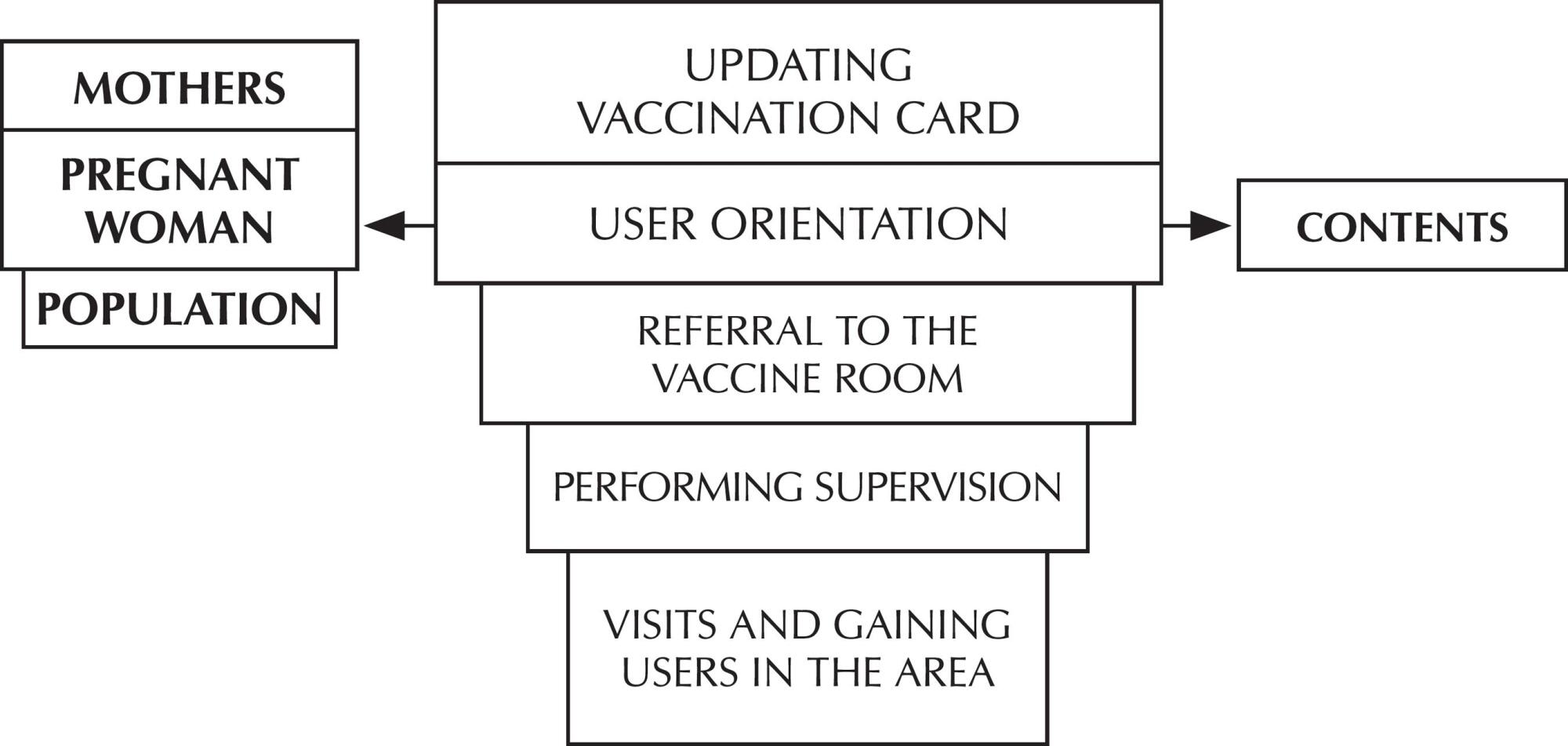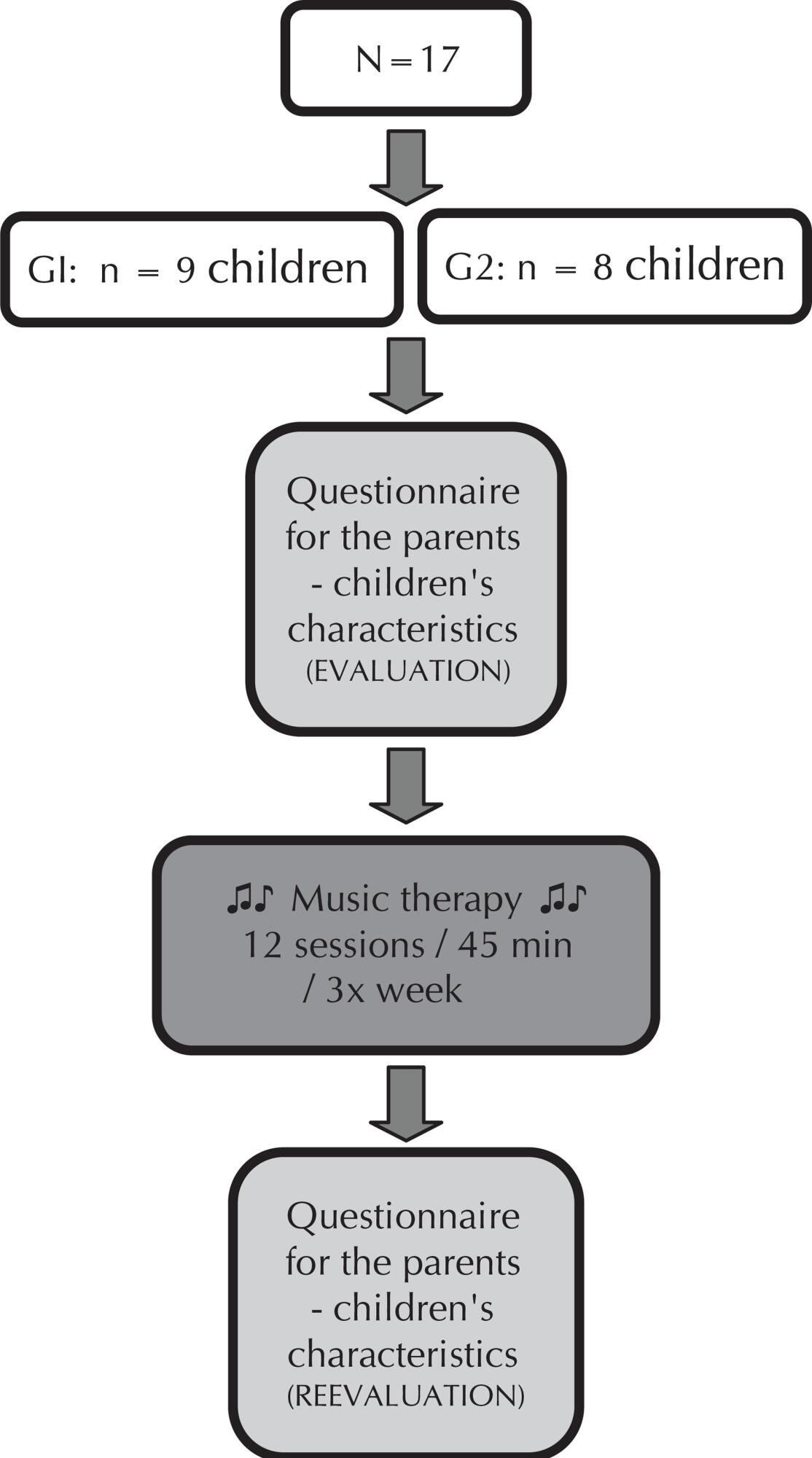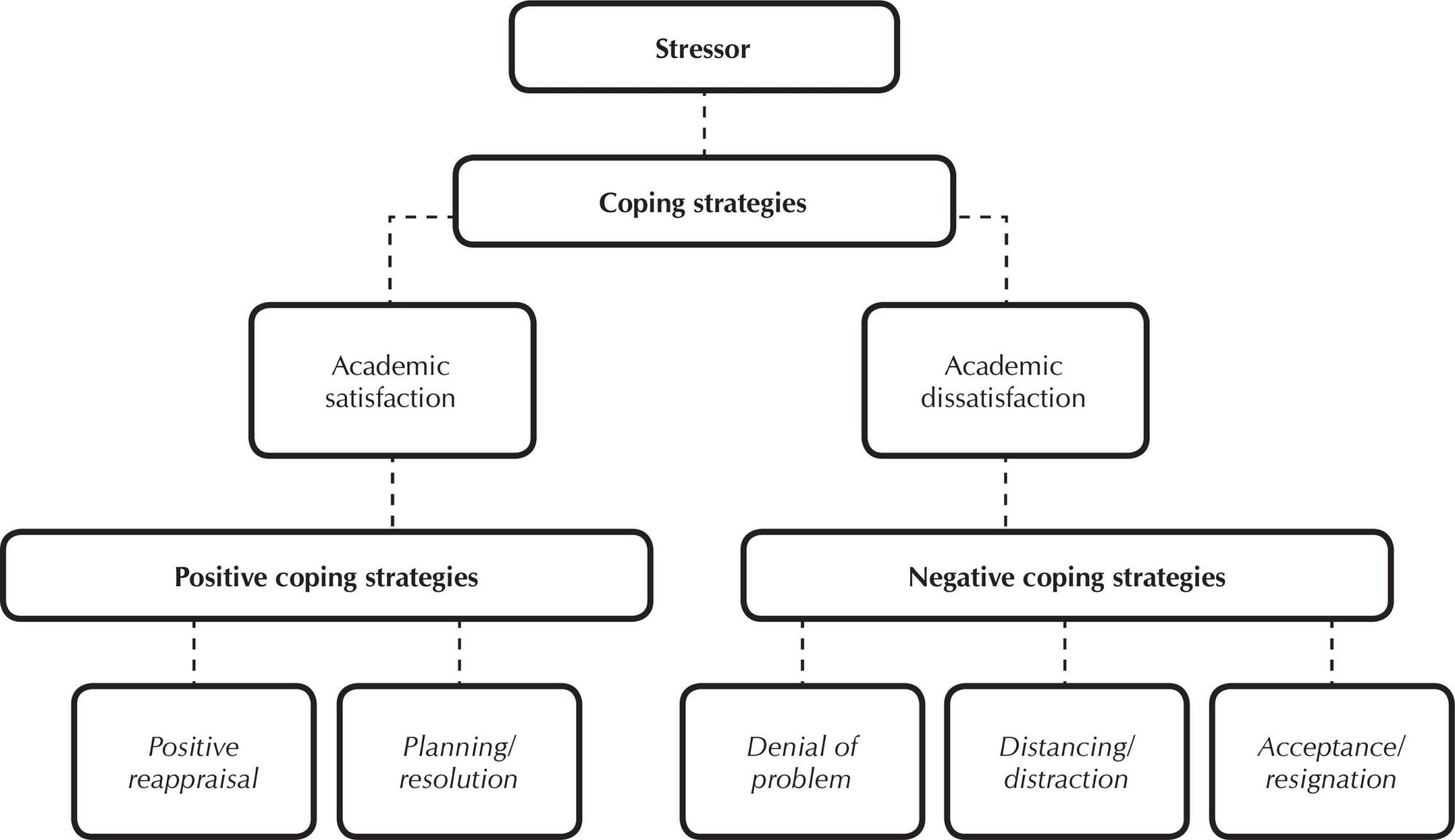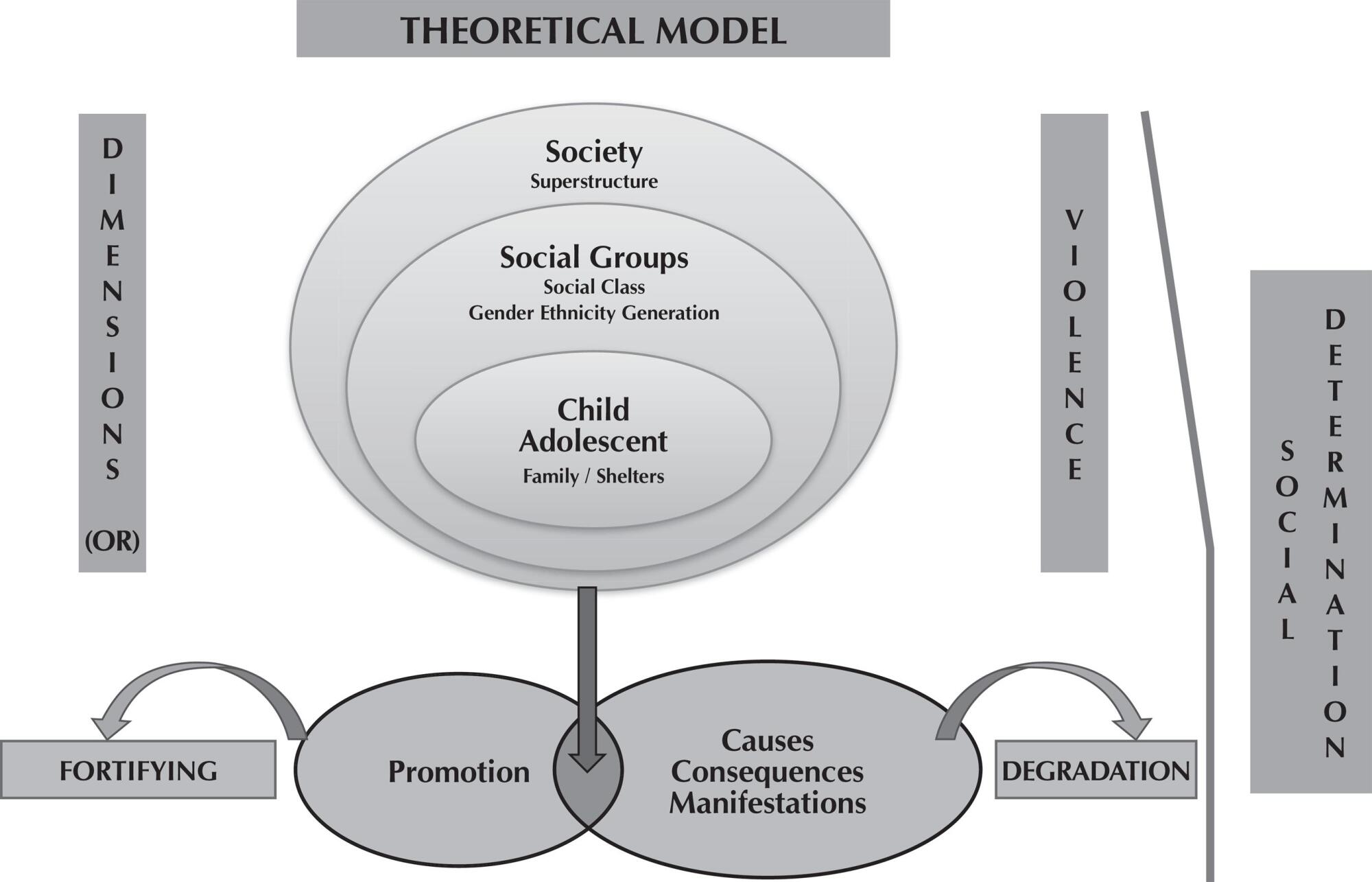-
RESEARCH01-01-2015
Nursing actions in primary care and the control of diseases preventable through vaccines
Revista Brasileira de Enfermagem. 2015;68(5):803-809
Abstract
RESEARCHNursing actions in primary care and the control of diseases preventable through vaccines
Revista Brasileira de Enfermagem. 2015;68(5):803-809
DOI 10.1590/0034-7167.2015680506i
Views0See moreABSTRACT
Objective:
to discuss the actions performed by nurses in the control and eradication of diseases preventable with vaccines in healthcare setting, according to the National Primary Health Care Policy.
Method:
qualitative research supported by the social phenomenology of Schutz. It had as its setting a Family Health Clinic, located in the city of Rio de Janeiro (Brazil), with ten nurses. The data collection occurred through interviews.
Results:
nurses’ actions aimed at the control and eradication of preventable diseases mainly involve updating a vaccination card, administering the vaccine, and guiding the user of the Health Unit, with the purpose of preventing diseases. The National Primary Care Policy and all manuals from the Ministry of Health recognize the importance of focusing on the service user.
Conclusion:
the user’s lifestyle must be considered, and his access to services aiming at the expansion of the control of diseases preventable with vaccines should be promoted.

-
RESEARCH01-01-2015
Children with neuropsychomotor development delay: music therapy promoting quality of life
Revista Brasileira de Enfermagem. 2015;68(5):797-802
Abstract
RESEARCHChildren with neuropsychomotor development delay: music therapy promoting quality of life
Revista Brasileira de Enfermagem. 2015;68(5):797-802
DOI 10.1590/0034-7167.2015680505i
Views0See moreABSTRACT
Objective:
to identify the influence of music therapy on the behavior and quality of life of children with neuropsychomotor development delay (NPMDD).
Method:
experimental research, with applications of music therapy (in a group of children) held in the specialized association in Cruz das Almas – Bahia, composed of 17 children with NPMDD aged 5 to 12 years. The behavior of children involving emotional, physical, social and school aspects was observed.
Results:
there was an evolution in all aspects, being this improvement significant to Emotional Capacity and School Capacity domains, showing the beneficial effects of music therapy.
Conclusion:
music therapy becomes a treatment option for children with NPMDD, improving their quality of life.

-
RESEARCH01-01-2015
Spirituality, religion and personal beliefs of adolescents with cancer
Revista Brasileira de Enfermagem. 2015;68(5):791-796
Abstract
RESEARCHSpirituality, religion and personal beliefs of adolescents with cancer
Revista Brasileira de Enfermagem. 2015;68(5):791-796
DOI 10.1590/0034-7167.2015680504i
Views0See moreABSTRACT
Objective:
to examine adolescents’ perception about spirituality, religion and personal beliefs in their lives due to cancer and a possible strategy for coping with the disease.
Method:
qualitative research, both descriptive and exploratory. The data were collected by means of a personal semi-structured interview, and the categories were analyzed by content analyzes.
Results:
nine adolescents who were undergoing cancer treatment at one of the two institutions located Uberaba, Brazil, participated in the study. Based on the analysis and interpretation of results, it was possible to systematize them according to four categories: spiritual history of the individual; faith and belief; importance of spirituality in their lives, and the community acting as a spiritual supporter. Most adolescents referred to spirituality as being an important tool for dealing with the disease, especially concerning religious rituals and community support.
Conclusion:
spirituality creates hope for adolescents, which helps them to cope with cancer-related diffi culties and contribute to the search for the meaning of life.
-
RESEARCH01-01-2015
Coping strategies of nursing students for dealing with university stress
Revista Brasileira de Enfermagem. 2015;68(5):783-790
Abstract
RESEARCHCoping strategies of nursing students for dealing with university stress
Revista Brasileira de Enfermagem. 2015;68(5):783-790
DOI 10.1590/0034-7167.2015680503i
Views0See moreABSTRACT
Objective:
to identify the coping strategies used by nursing students in a university in southern Brazil, establishing the relationship between the sociodemographic and academic variables examined.
Method:
an exploratory, descriptive, quantitative study, carried out with 146 nursing students, through application of the Coping Strategies Inventory. For the data analysis, descriptive statistics, analysis of variance and regression analysis were used.
Results:
it was found that the coping strategy most used by nursing students is escape. A connection was also detected between the academic dissatisfaction variable and the use of negative coping strategies.
Conclusion:
it was noted that students satisfi ed with the course used positive coping strategies targeting the problem, whereas dissatisfi ed students used negative strategies focusing on the emotion.

-
RESEARCH01-01-2015
Unemployment and psychological distress in nurses
Revista Brasileira de Enfermagem. 2015;68(5):775-782
Abstract
RESEARCHUnemployment and psychological distress in nurses
Revista Brasileira de Enfermagem. 2015;68(5):775-782
DOI 10.1590/0034-7167.2015680502i
Views0See moreABSTRACT
Objective:
to assess psychological distress in nurses searching for their first job, especially symptoms of depression, and identify the factors that caused mental suffering, and how these nurses cope with the situation.
Method:
this was a qualitative study carried out with unemployed nurses who had graduated less than two years before the time of the study, and were residents of the town of Assis in the Brazilian state of São Paulo. Data were gathered by means of semi-structured interviews, content analysis, and application of the Beck Depression Inventory psychometric scale.
Results:
of the 14 nurses that participated, three had scores on the psychometric scale indicative of depression. Participants reported psychological distress related to unemployment, poor university education, and surplus labor due to the large number of graduates and lack of jobs, as well as a culture of employment centered on professionals’ social networks. The unemployed nurses did not have effective ways of coping.
Conclusion:
unemployment promoted psychological distress among the new nurses, especially symptoms of depression, without effective means of coping.
-
EDITORIAL01-01-2015
Newborn blood spot screening: to expand or not to expand?
Revista Brasileira de Enfermagem. 2015;68(5):771-772
Abstract
EDITORIALNewborn blood spot screening: to expand or not to expand?
Revista Brasileira de Enfermagem. 2015;68(5):771-772
DOI 10.1590/0034-7167.2015680501i
Views0“The principal constraint on what we can detect in newborn screening is fast becoming what we choose to detect: rather than what is limited for us by technical feasibility or cost”().Technological advances are providing the medical world an opportunity to extend the number of conditions newborn babies are screened for. Tandem mass spectrometry (TMS, also […]See more -
EDITORIAL01-01-2015
Teste de triagem neonatal: expandir ou não expandir?
Revista Brasileira de Enfermagem. 2015;68(5):771-772
Abstract
EDITORIALTeste de triagem neonatal: expandir ou não expandir?
Revista Brasileira de Enfermagem. 2015;68(5):771-772
DOI 10.1590/0034-7167.2015680501i
Views0“A principal restrição sobre o que podemos detectar no teste de triagem neonatal está rapidamente se tornando o que escolhemos detectar em vez daquilo que nos é limitado por razão de viabilidade técnica ou custo”().Os avanços tecnológicos estão conferindo ao mundo médico uma oportunidade de aumentar o número de patologias para as quais os recém-nascidos […]See more -
REVIEW01-01-2015
International Classification for Nursing Practice – ICNP®: application to the Brazilian reality
Revista Brasileira de Enfermagem. 2015;68(4):730-731
Abstract
REVIEWInternational Classification for Nursing Practice – ICNP®: application to the Brazilian reality
Revista Brasileira de Enfermagem. 2015;68(4):730-731
DOI 10.1590/0034-7167.2015680422i
Views0The author and organizer, Telma Ribeiro Garcia, added her theoretical and practical knowledge to those of a dozen other authors for the creation of the book “International Classification for Nursing Practice – ICNP®: application to the Brazilian reality”. She is a retired professor of the Department of Public Health Nursing and Psychiatry at the Federal […]See more
-
RESEARCH06-01-2015
Workers of CEASA: factors associated with fatigue and work ability
Revista Brasileira de Enfermagem. 2015;68(3):460-466
Abstract
RESEARCHWorkers of CEASA: factors associated with fatigue and work ability
Revista Brasileira de Enfermagem. 2015;68(3):460-466
DOI 10.1590/0034-7167.2015680312i
Views0See moreABSTRACT
Objective:
to investigate the socio-demographic characteristics, lifestyle and health conditions related to fatigue and the work ability.
Method:
a cross-sectional study was conducted in 2011 and the sample was composed by 90 workers from the supply center of Campinas. Three questionnaires were used: Fatigue; Work ability index; and socio-demographic characteristics.
Results:
in the univariate regression analysis, the variables associated with work ability were: education, use of medicine, stress, pain in the last six months and pain in the last week. In univariate regression analysis the variables associated with fatigue were: education, stress, sleepiness, pain in the last six months, pain in the last week and health problems.
Conclusion:
these results indicate the need for health promotion program implementation among these workers.
-
RESEARCH06-01-2015
Nursing Terminology defines domestic violence against children and adolescents
Revista Brasileira de Enfermagem. 2015;68(3):452-459
Abstract
RESEARCHNursing Terminology defines domestic violence against children and adolescents
Revista Brasileira de Enfermagem. 2015;68(3):452-459
DOI 10.1590/0034-7167.2015680311i
Views0See moreABSTRACT
Objective:
Identifi cation of terminology relating to nursing practices aimed at children and adolescents at risk of domestic violence.
Methods:
bibliographic descriptive research which selected 40 articles from the Virtual Health Library on domestic violence against children and adolescents, its manifestations, causes, and consequences, in association with nursing procedures for its confrontation and prevention, and which also identifi ed terminology via computer tools.
Results:
17,365 terms that, after standardization and uniformity procedures, resulted in a listing of 915 terms.
Conclusion:
The terminology selected focused on the individual biopsychic nexus and the historic manifestation of this phenomenon was partially identifi ed in terms that appear less frequently in these articles, thereby explaining the contradiction between the formal identifi cation logic of such terminology and the dialectic logic that recognizes the historic reasons for, and dynamicity of, such phenomena.

-
RESEARCH06-01-2015
Instrumento para avaliação de estilo de vida sedentário em pacientes com hipertensão
Revista Brasileira de Enfermagem. 2015;68(3):445-451
Abstract
RESEARCHInstrumento para avaliação de estilo de vida sedentário em pacientes com hipertensão
Revista Brasileira de Enfermagem. 2015;68(3):445-451
DOI 10.1590/0034-7167.2015680310i
Views0See moreRESUMEN
Objetivo:
este artículo describe la precisión diagnóstica del International Physical Activity Questionnaire en la identifi cación del diagnóstico enfermero Estilo de vida sedentario.
Método:
un estudio de precisión diagnóstica se desarrolló con 240 individuos con hipertensión arterial establecida. El análisis de precisión diagnóstica se basó en medidas de sensibilidad, especifi cidad, valores predictivos, razones de verosimilitud, efi ciencia, odds ratio diagnóstica, índice de Youden y área bajo la curva característica receptor-operador.
Resultados:
diferencias estadísticas entre los sexos se observaron para las actividades intensidad moderada y la actividad física total. La edad se correlacionó negativamente con la actividad de intensidad moderada y la actividad física total.
Conclusión:
el análisis del área bajo la curva característica receptor-operador para las actividades de intensidad moderada, de caminar, y la actividad física total mostró que el International Physical Activity Questionnaire presenta moderada capacidad para clasificar correctamente los sujetos con y sin el estilo de vida sedentario.
-
RESEARCH06-01-2015
Instrument for evaluation of sedentary lifestyle in patients with high blood pressure
Revista Brasileira de Enfermagem. 2015;68(3):445-451
Abstract
RESEARCHInstrument for evaluation of sedentary lifestyle in patients with high blood pressure
Revista Brasileira de Enfermagem. 2015;68(3):445-451
DOI 10.1590/0034-7167.2015680310i
Views0See moreABSTRACT
Objective:
this article describes the diagnostic accuracy of the International Physical Activity Questionnaire to identify the nursing diagnosis of sedentary lifestyle.
Method:
a diagnostic accuracy study was developed with 240 individuals with established high blood pressure. The analysis of diagnostic accuracy was based on measures of sensitivity, specifi city, predictive values, likelihood ratios, effi ciency, diagnostic odds ratio, Youden index, and area under the receiver-operating characteristic curve.
Results:
statistical differences between genders were observed for activities of moderate intensity and for total physical activity. Age was negatively correlated with activities of moderate intensity and total physical activity.
Conclusion:
the analysis of area under the receiver-operating characteristic curve for moderate intensity activities, walking, and total physical activity showed that the International Physical Activity Questionnaire present moderate capacity to correctly classify individuals with and without sedentary lifestyle.
-
RESEARCH06-01-2015
Potentialities and weaknesses in the care network of people with HIV/AIDS
Revista Brasileira de Enfermagem. 2015;68(3):438-444
Abstract
RESEARCHPotentialities and weaknesses in the care network of people with HIV/AIDS
Revista Brasileira de Enfermagem. 2015;68(3):438-444
DOI 10.1590/0034-7167.2015680309i
Views0See moreABSTRACT
Objective:
to understand the strengths and weaknesses in the care network of people with HIV/AIDS in a referral center in the state of Santa Catarina-SC.
Method:
participants were eight subjects and their care network, totaling 18 participants. Data were collected through interviews and examined by content analysis, theoretically supported by symbolic interaction.
Results:
the analysis resulted in the following categories: The network offering care to people with acquired immunodefi ciency syndrome, and Facing Barriers in care, which refl ect the strengths and weaknesses in the care network. The fi rst depicts the provision of emotional and humanized care, and the second a restricted network formed by health professionals and a family member.
Conclusion:
the professional care network is important, despite the increased number of assistances in a physical structure and amount of professionals who no longer meet the growing demand.
-
RESEARCH06-01-2015
AIDS epidemic in the triple frontier: subsidies for professional practice
Revista Brasileira de Enfermagem. 2015;68(3):429-437
Abstract
RESEARCHAIDS epidemic in the triple frontier: subsidies for professional practice
Revista Brasileira de Enfermagem. 2015;68(3):429-437
DOI 10.1590/0034-7167.2015680308i
Views0See moreABSTRACT
Objective:
to analyze the AIDS epidemic trend from 1988 to 2012, in a tri-border area.
Method:
Ecological time-series study with data from the Department of informatics from the Brazilian Unifi ed Health System (SUS).
Results:
A total of 1427 cases of AIDS were registered, and 82.1% were aged 20-49 years and 56% in males. The relationship man/woman went from 9/1 to 1/1 and increased the number of cases among individuals with more years of education, also, people aged more than 50 years old the age group from 20 to 34 years old. The most common exposure category was heterosexual, significantly higher among women; on the other hand, drug injection use was associated with male gender.
Conclusion:
seeking to embrace the changes in the epidemiological scenario of AIDS, nursing professionals should implement intervention strategies for people identified as the most vulnerable to HIV infection.
-
RESEARCH06-01-2015
The Informal Caregiver Burden Assessment Questionnaire: validation for Brazil
Revista Brasileira de Enfermagem. 2015;68(3):421-428
Abstract
RESEARCHThe Informal Caregiver Burden Assessment Questionnaire: validation for Brazil
Revista Brasileira de Enfermagem. 2015;68(3):421-428
DOI 10.1590/0034-7167.2015680307i
Views0See moreABSTRACT
Objectives:
to analyze the dimensionality, convergent construct validity and internal consistency of the Informal Caregiver Burden Assessment Questionnaire (QASCI) after its semantic adaptation to Brazil.
Method:
this methodological study was developed with 132 informal caregivers of elders who are dependent of help for basic or instrumental activities of daily living, in a capital city in Northeast Brazil. Quality of life measures related to health, anxiety and depression were used in the analysis of the convergent construct validity of the QASCI.
Results:
the results of the instrument construct validation evidenced statistically signifi cant correlations with the three measures. The confi rmatory factor analysis evidenced good adjustment of the theoretical model of seven factors (domains) of the version used in the group studied. Cronbach’s alpha for the scale total was 0.92.
Conclusion:
the Brazilian version of the QASCI was considered to be valid and reliable for assessing the burden of informal elder caregivers.
-
RESEARCH06-01-2015
Study of billing audits in a teaching hospital
Revista Brasileira de Enfermagem. 2015;68(3):414-420
Abstract
RESEARCHStudy of billing audits in a teaching hospital
Revista Brasileira de Enfermagem. 2015;68(3):414-420
DOI 10.1590/0034-7167.2015680306i
Views0See moreABSTRACT
Objectives:
to determine which component items of hospital bills, examined by nurse auditors, were adjusted the most during pre-analysis; to identify the impact upon revenue caused by the adjustments to bills analyzed by physician and nurse auditors; and to identify disallowances related to items checked by the audit team.
Method:
quantitative, exploratory, descriptive, singlecase study.
Results:
after analysis of 2,613 bills, it was found that the item most included by nurses was gas (90.5%) and the most excluded was inpatient drugs (41.2%). Hemodynamics materials, gases and equipment had the greatest impact on upward adjustments. Downward adjustments were the result of improper entries on bills and did not generate revenue losses. Of total disallowances, 52.24% were related to the pre-analysis of nurses and 47.76% to that of physicians.
Conclusion:
this study of the pre-analysis process provides input that enhances knowledge about hospital bill audits.
-
ERRATUM01-01-2016
ERRATUM
Revista Brasileira de Enfermagem. 2016;69(5):1002-1002
Abstract
ERRATUMERRATUM
Revista Brasileira de Enfermagem. 2016;69(5):1002-1002
DOI 10.1590/0034-7167.20166905e01
Views0Article “Alcohol and alcoholism: attitudes of nursing students”, with number of DOI: http://dx.doi.org/10.1590/S0034-71672013000100013, published in the journal Revista Brasileira de Enfermagem, v66(1):84-9, page 89 that read:“18. Miranda SP, Vargas D. Satisfação de pacientes de um centro de atenção Psicossocial álcool e drogas com o atendimento do enfermeiro. SMAD, Rev Eletrônica Saúde Mental Alcool Drog 2019;5(2):1-15”.[…]See more -
REVIEW01-01-2016
Research methodology for nursing and health: a book review
Revista Brasileira de Enfermagem. 2016;69(5):1000-1001
Abstract
REVIEWResearch methodology for nursing and health: a book review
Revista Brasileira de Enfermagem. 2016;69(5):1000-1001
DOI 10.1590/0034-7167-2015-0135
Views0For those interested in nursing and health, the book entitled “Research methodology for nursing and health: from theory to practice”() was released in October 2015, at the 67th Brazilian Congress of Nursing, sponsored by National ABEn. The interest emerged from two organizers: Dr. Maria Ribeiro Lacerda (UFPR) and Dr. Regina Gema Santini Costerano (UNIFRA). Forty-seven […]See more -
REFLECTION01-01-2016
Violence in the workplace in Nursing: consequences overview
Revista Brasileira de Enfermagem. 2016;69(5):996-999
Abstract
REFLECTIONViolence in the workplace in Nursing: consequences overview
Revista Brasileira de Enfermagem. 2016;69(5):996-999
DOI 10.1590/0034-7167-2015-0133
Views0See moreABSTRACT
Objective:
to reflect on the consequences of workplace violence experienced by nursing professionals.
Methods:
this is a reflection paper based on recent publications related to the subject, particularly researches carried out in Brazil and in other countries.
Results:
exposure to workplace violence has been associated with health problems in nursing professionals, which may be physical damage, emotional manifestations, and psychic disorders. It also affects the employee performance, his or her family and social interactions.
Conclusion:
this phenomenon is potentially noxious and costly, for it leads to suffering, illness, absence from work, and even death. This reflection calls attention moreover to the importance of a safe and adequate health care work environment.
-
REFLECTION01-01-2016
Construcción de la enfermera de práctica avanzada en Catalunya (España)
Revista Brasileira de Enfermagem. 2016;69(5):991-995
Abstract
REFLECTIONConstrucción de la enfermera de práctica avanzada en Catalunya (España)
Revista Brasileira de Enfermagem. 2016;69(5):991-995
DOI 10.1590/0034-7167.2016690507
Views0RESUMEN
El desarrollo de la enfermera de práctica avanzada (EPA) ha supuesto un reto para las enfermeras en países como EE.UU., Canadá, Gran Bretaña y Australia, entre otros, y desde hace escasos años está siendo considerada en Catalunya y España como un sistema para desarrollar nuevos roles que aporten eficacia y eficiencia al sistema sanitario. El presente artículo pretende conceptualizar la EPA y los modelos de referencia así como contextualizar y reflexionar sobre la EPA en Catalunya, desde el punto de vista de formación y de la implantación de los denominados nuevos roles de enfermería, asimilándolos a la práctica avanzada.
Keywords:Competencia ClínicaEnfermeríaEnfermería de Práctica AvanzadaPráctica ProfesionalRol de la EnfermeraSee more -
REFLECTION01-01-2016
Developing the Advanced Practice Nurse in Catalonia
Revista Brasileira de Enfermagem. 2016;69(5):991-995
Abstract
REFLECTIONDeveloping the Advanced Practice Nurse in Catalonia
Revista Brasileira de Enfermagem. 2016;69(5):991-995
DOI 10.1590/0034-7167.2016690507
Views0See moreABSTRACT
The development of advanced practice nurses (APN) has proved a challenge for nurses in countries such as the USA, Canada, Great Britain, and Australia among others. It is only in recent years that the system has been considered in Catalonia and Spain as a way to develop new roles to bring effectiveness and efficiency to the health system. From the standpoint of training and implementation of the above-mentioned new nursing roles, the following article aims to conceptualise APN and its reference models, as well as to contextualise and reflect on APN in Catalonia in order to assimilate them into advanced practice.
-
EXPERIENCE REPORT01-01-2016
International academic mobility in nursing education: an experience report
Revista Brasileira de Enfermagem. 2016;69(5):986-990
Abstract
EXPERIENCE REPORTInternational academic mobility in nursing education: an experience report
Revista Brasileira de Enfermagem. 2016;69(5):986-990
DOI 10.1590/0034-7167-2015-0128
Views0See moreABSTRACT
Objective:
report the experience of international academic mobility in Ireland through the program Science Without Borders during undergraduate education in nursing.
Method:
a report of experience presented in chronological order, with a descriptive nature.
Results:
the opportunity to know and be able to discuss questions regarding health and nursing in Ireland allowed the review of concepts and a more reflective perspective regarding nursing practices. Additionally, the exchange promoted personal strengthening regarding the confrontation and solution of problems, development of technical and scientific abilities, improvement of linguistic competences and construction of personality, independence and maturity.
Conclusion:
regarding such constructive and enriching experience that this mobility provides to students, to the governing authorities, to the population and to Brazilian nursing, sharing this experience is expected to serve as encouragement for those who search for new horizons, with the objective of adding knowledge for their personal and professional life.
-
EXPERIENCE REPORT01-01-2016
Online training for health professionals in three regions of Brazil
Revista Brasileira de Enfermagem. 2016;69(5):981-985
Abstract
EXPERIENCE REPORTOnline training for health professionals in three regions of Brazil
Revista Brasileira de Enfermagem. 2016;69(5):981-985
DOI 10.1590/0034-7167.2016690506
Views0See moreABSTRACT
Objective:
to describe online training experience aimed at professionals working in the public health service in 27 Neonatal and Pediatric Intensive Care Units, and to reflect concerning the training process and possible improvements in this process.
Method:
this is an experience report study about the online training with multidisciplinary content, planned from the situational diagnosis of 27 institutions. The training target set was 10 participants per institution and per module, including the following topics: Indicators of Quality as a Management Tool, Hand Hygiene, Patient Safety, Intravenous Therapy and Patients’ Chart Record.
Results:
a total of 2,071 active students in the modules, with 1,046 approved. The mean of 76 students per module exceeded the target set.
Conclusion:
experience has shown that online training is comprehensive as a potential tool for the professional technical development and digital inclusion. The online learning system becomes weakened if participants are unaware of the technological resources.
-
REVIEW01-01-2016
Technologies in intensive care: causes of adverse events and implications to nursing
Revista Brasileira de Enfermagem. 2016;69(5):972-980
Abstract
REVIEWTechnologies in intensive care: causes of adverse events and implications to nursing
Revista Brasileira de Enfermagem. 2016;69(5):972-980
DOI 10.1590/0034-7167.2016690505
Views0See moreABSTRACT
Objective:
to identify the causes of adverse events affecting clients resulting from the use of equipment in intensive care services; to point out the main recommendations for clinical practice to minimize these events and, then, discuss the implications to nursing care.
Method:
integrative and descriptive review on the SciELO, Medline, LILACS, and PubMed databases. Articles were selected based on the inclusion criteria and the structured instrument was applied.
Results:
altogether, 11 articles were selected where three evidence units were outstanding: Equipment failure; inadequate use of equipment; and team failure. Permanent education of professionals; evaluation of production and availability of equipment; and use of checklists are recommended.
Conclusion:
preventing adverse events related to equipment is one of the nursing responsibilities and requires the establishment of defensive barriers to prevent these.
Search
Search in:
Nuvem de Tags
Aged (144) Atenção Primária à Saúde (239) COVID-19 (104) Cuidados de Enfermagem (269) Educação em Enfermagem (151) Educação em Saúde (139) Enfermagem (930) Estudos de Validação (131) Health Education (144) Idoso (208) Mental Health (149) Nursing (987) Nursing Care (306) Patient Safety (151) Primary Health Care (284) Qualidade de Vida (104) Quality of Life (106) Saúde Mental (145) Segurança do Paciente (150) Validation Studies (108)



